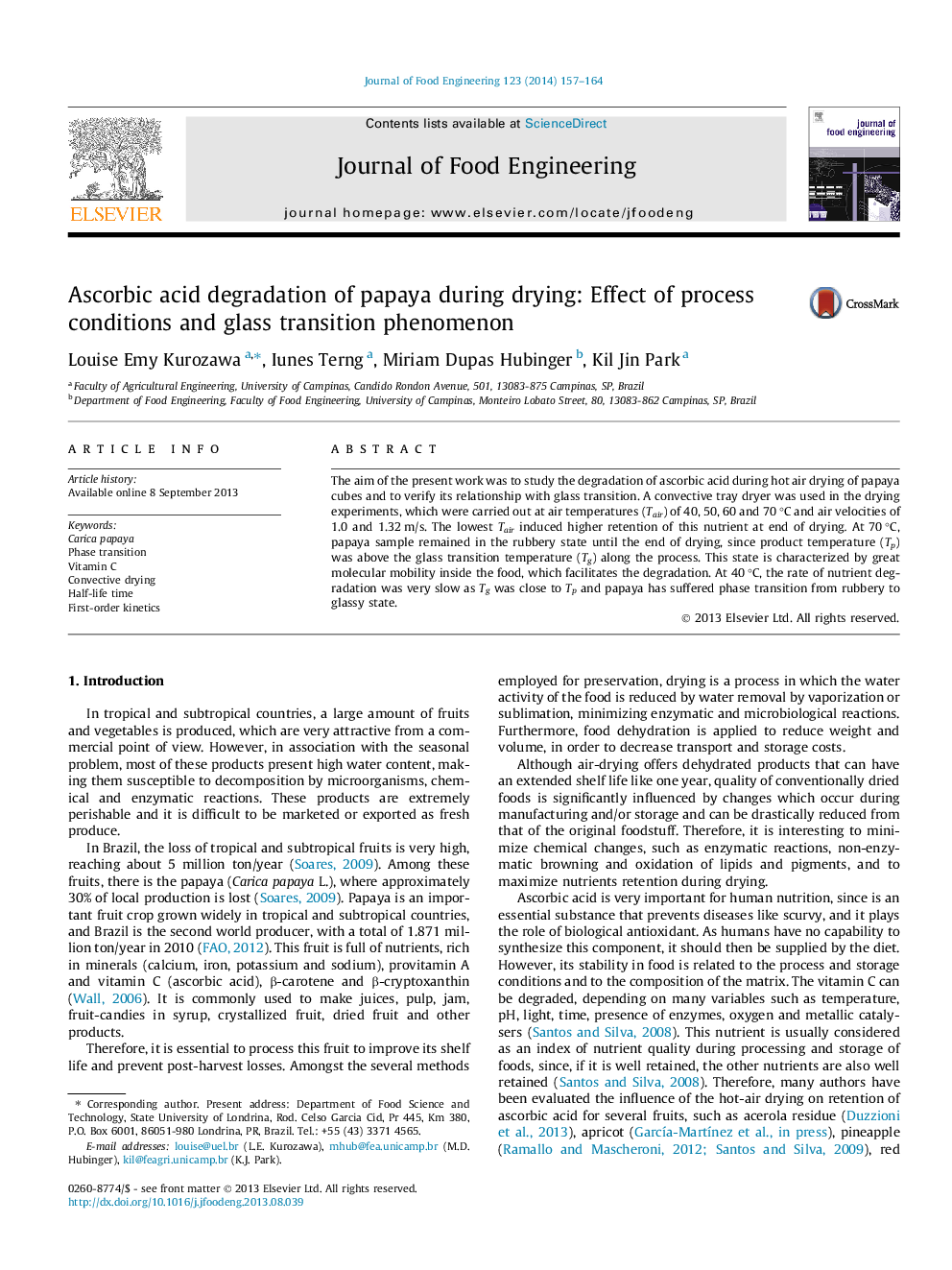| Article ID | Journal | Published Year | Pages | File Type |
|---|---|---|---|---|
| 223218 | Journal of Food Engineering | 2014 | 8 Pages |
•We evaluated the relationship between Tg and vitamin C loss of papaya during drying.•The highest temperature induced higher nutrient loss.•The rate of loss decreased rapidly when Tg was close to product temperature.
The aim of the present work was to study the degradation of ascorbic acid during hot air drying of papaya cubes and to verify its relationship with glass transition. A convective tray dryer was used in the drying experiments, which were carried out at air temperatures (Tair) of 40, 50, 60 and 70 °C and air velocities of 1.0 and 1.32 m/s. The lowest Tair induced higher retention of this nutrient at end of drying. At 70 °C, papaya sample remained in the rubbery state until the end of drying, since product temperature (Tp) was above the glass transition temperature (Tg) along the process. This state is characterized by great molecular mobility inside the food, which facilitates the degradation. At 40 °C, the rate of nutrient degradation was very slow as Tg was close to Tp and papaya has suffered phase transition from rubbery to glassy state.
